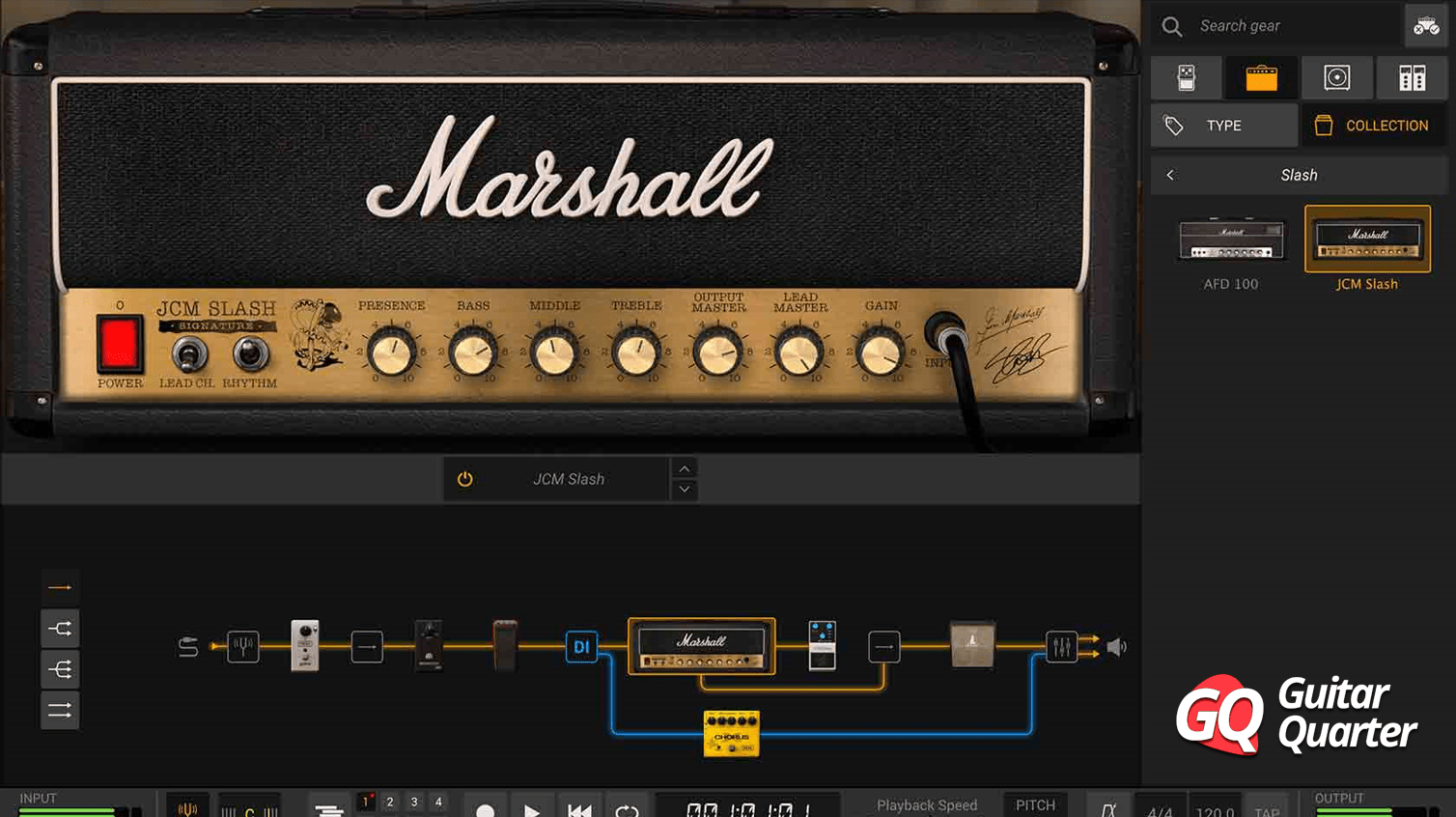Acoustic guitar: solid wood vs laminate, pros and cons
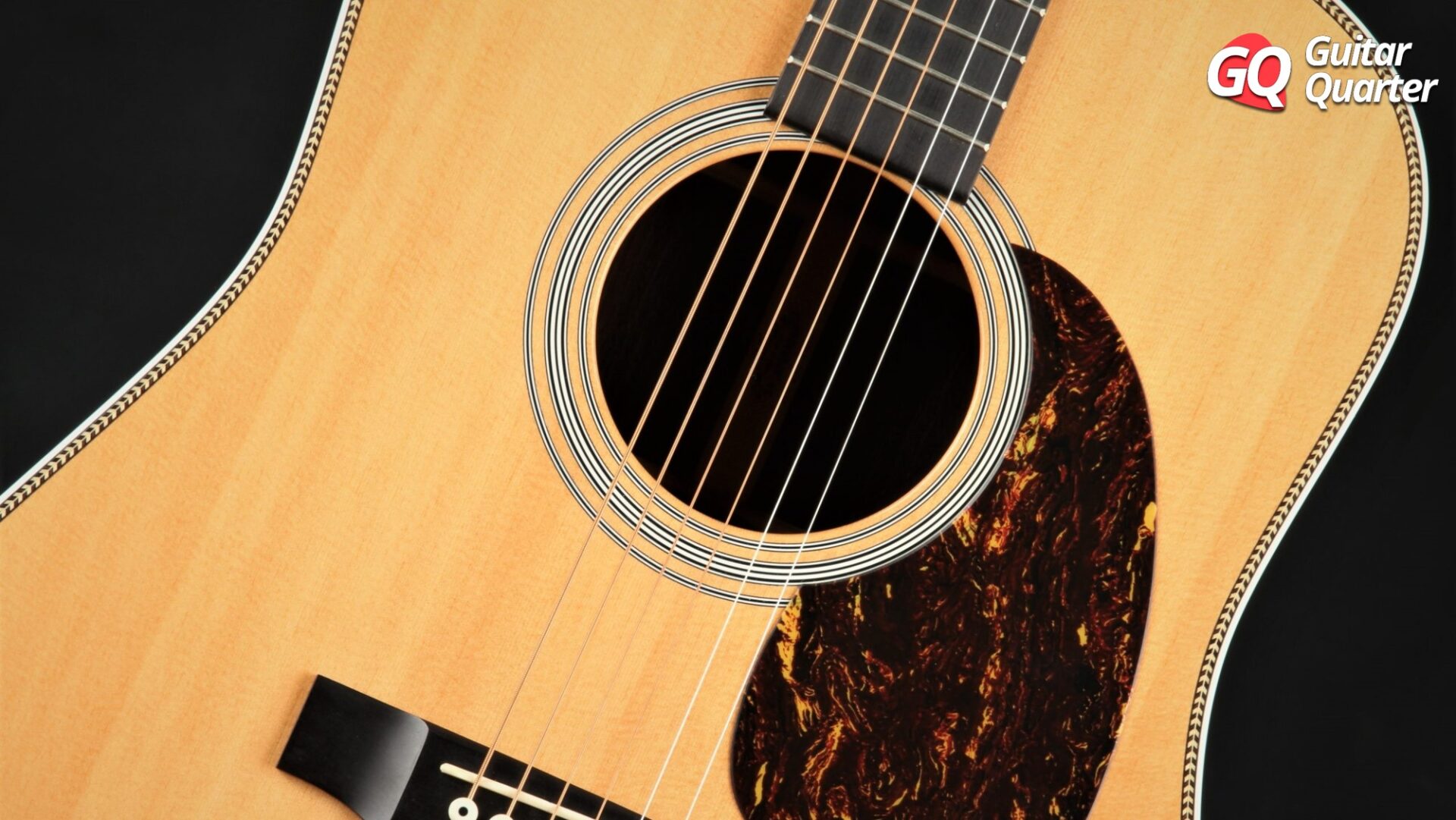
The truth about solid wood vs. laminate acoustic guitar, differences, characteristics, pros, cons, myths and deceptions related to the construction of an acoustic instrument.
Table of Contents
Solid vs laminate wood acoustic guitars
First of all, don’t mistake a solid wood acoustic guitar for a guitar with a solid body like electric guitars. Acoustic guitars, which have a soundboard, are made of solid wood and/or laminate wood. The general belief is that solid wood is better than laminate wood, and while this is generally true, in reality this is not always the case. In this article we will debunk myths about it and we will tell you if you should spend thousands of dollars to get a solid wood acoustic guitar; Or if, on the contrary, what you really need is a laminate wood acoustic guitar.
In addition, we recommend that you visit our guide to the best easy Country songs to play on your acoustic guitar.
Why is laminate wood used for acoustic guitars?
Quality wood is increasingly scarce and therefore more expensive. In addition, solid wood is more difficult to work and shape, and in turn, creates waste.
On the other hand, laminate wood is very easy to manipulate for the manufacture of guitars or any other product. In addition, it is produced largely from solid wood waste. Also, it allows aesthetically attractive wood to be used in a greater number of instruments since it is cut into very thin sheets. All of this makes the use of laminate wood much cheaper for acoustic guitar manufacturers. Thus, laminate wood makes it possible to offer attractive products much cheaper than if they used only solid wood.
But then is laminate wood worse than solid wood? Not necessarily, let’s continue our analysis.
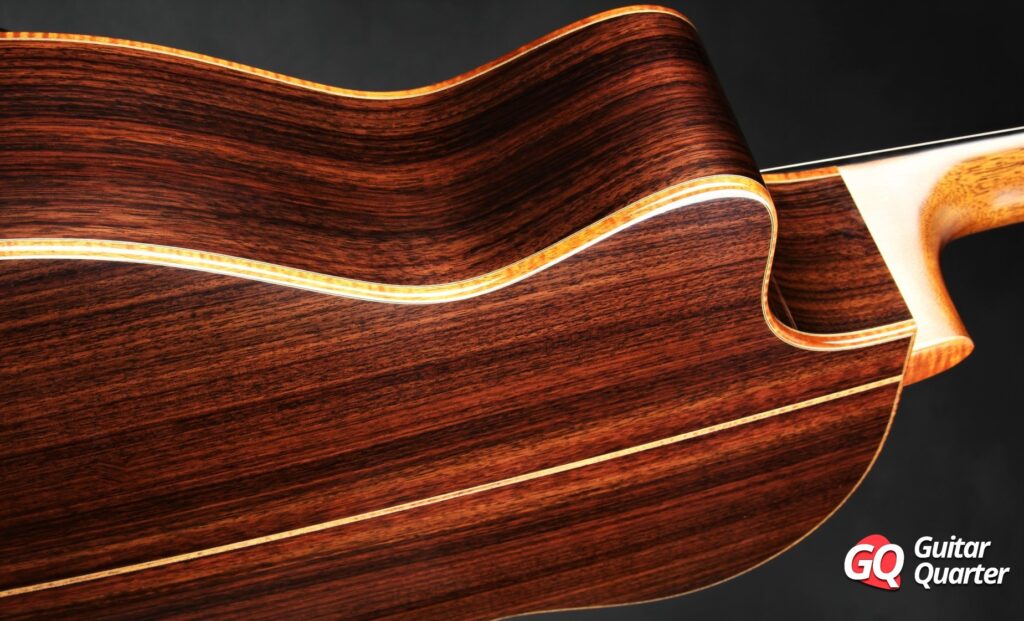
How is laminate guitar wood made?
There are many different types of wood laminate. In general, these are wood chips glued and / or very thin layers of wood. This allows guitar makers to combine cheaper wood and scrap wood on the inside with more attractive and showy wood on the outside.
Generally, laminate wood is made up of three layers of wood, a core or center layer with cheaper thicker wood, and two thin outer layers with more expensive wood. Thus, the veneer or upper part is made with an attractive wood. These parts, when glued or joined, are stronger and have greater resistance than a normal piece of solid wood. Additionally, laminate is also easier to shape than solid wood.
In addition, we recommend that you see our tutorial on sizes of acoustic, classical and electric guitars for adults, teenagers and children.
What is the difference between laminate and solid wood for guitars?
As we already anticipated, laminate wood is stronger and more resistant than solid wood. Also, it is easier to work with than solid wood. For example, Taylor Academy guitars have laminate wood sides and backs, which use no bracing. In addition, this is more economical, since it uses wood that is not so showy -and cheaper- for the invisible layers, reserving only wood of a higher quality and cost for the upper thin layer that remains visible.
But like everything, laminate wood has a point against it, and that is that it is more rigid than solid wood, which means it has less resonance. This makes the tone of a solid wood instrument richer, fuller, and louder than that of a laminate guitar.

How to detect if a guitar has solid or laminate wood?
Although it is not easy, sometimes you can detect if a wood is solid or laminate. In order to identify what type of wood it is, you must be able to see if the wood has glued layers of wood or if it is a single piece. So we first need to understand how acoustic guitars are built.
Typically, you can find guitars built with:
- All laminate wood body,
- All solid wood body,
- Solid wood top and laminate wood back and sides,
- In some cases, not so common, there are also guitars with a solid wood top and back and only the sides of laminate wood.
If the body has binding, it is difficult to identify what type of wood it is, since the binding hide the cut of the wood. Normally, only very cheap guitars allow you to see the laminate on the sides of the body. Laminate guitars that are not very low quality will hide the laminate with binding.
However, through the soundhole of an acoustic guitar top, you can usually see if the top is made of solid or laminate wood. As we have already seen, in order to identify what type of wood it is, you have to see if it has the small layers, looking at the opening of the soundhole.
When the top is laminated, you will know that the entire guitar is made of laminate wood. On the other hand, when you see that it is made of solid wood, you will only know that the top is solid, because the guitar back and sides can be built both with laminate or solid wood.
You may be interested in our guide to the best electric guitars of all time.
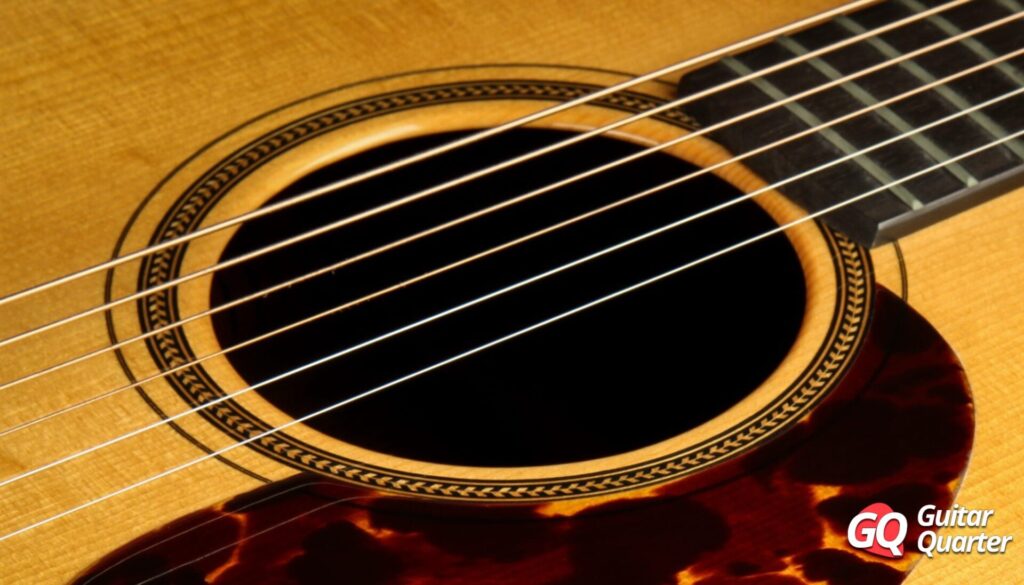
Are there bad acoustic guitars with solid wood bodies?
Unfortunately yes. There are brands of low quality and price, which make ‘solid wood’ instruments with terrible build quality. These bad acoustic guitars use poor quality solid woods: thick and heavy, with thick bracing and an overall sloppy approach to the instrument. Thus, these woods have little ability to vibrate and resonate, killing the tone of the guitar.
Basically, they are a marketing strategy to make the buyer believe that they are buying a quality instrument. So often these cheap acoustic guitars built from solid woods don’t really bring the benefits they’re supposed to. As we’ve already said, this is because they’re cheaply built with poor quality tonewoods that are often under-seasoned, making them thick and over-reinforcing -brace- them to prevent them from splitting, warping, and deforming quickly.
Are there good acoustic guitars with laminate wood bodies?
Of course! Remember that wood is only one of the many components of a guitar, important, but not the only one. Sure, there are plenty of guitars out there with poor-quality laminates, which are literally nothing more than cheap, thick plywood. But there are also many good laminate wood constructions like those made by leading brands. Logically, they are not tonally comparable to a solid wood guitar, but that does not mean that they are not good guitars.

Do not miss our selection of the best easy songs to play on the guitar for beginners.
Construction qualities of an acoustic guitar body: solid vs. laminate wood
The best guitars, or at least the most expensive ones, have a body made entirely of solid wood, that is, soundboard, back and sides. By contrast, the bodies of the cheapest guitars are made of laminate wood.
Solid and laminate wood qualities used in acoustic guitars
Does this mean that a solid wood guitar is always better than a laminate one? Well no. Here is one of the biggest myths about acoustic guitars. As in everything, there are different qualities of both solid wood and laminate wood. Brands like Martin and Taylor use high-quality laminate woods for their lower series, which can be vastly better than the solid woods used by generic Asian brands dedicated to inexpensive instruments.
This is not only due to the species of tonewood used, but also the quality of seasoning or drying process of the tonewood. Wood, if not properly treated, tends to move and warp. For this reason, low quality solid wood guitars use thicker woods and bracing, to prevent the low quality solid wood from warping. This makes the wood more rigid, losing the main advantage that solid wood has, its ability to vibrate and resonate. So, a good quality laminate wood guitar is better than a low quality solid wood guitar.
Also, as we have already seen, there are guitars with a solid wood top and laminate wood back and sides. This is because the most important part of a acoustic guitar body is the soundboard -the top of the guitar body-, which is why this way of manufacturing is used as an intermediate point. In this way, a very good quality instrument is achieved for a very affordable price.

Also, you might be interested in our guide on types of guitars: characteristics, differences, pros and cons.
Should I worry about laminate vs. solid wood on an entry level acoustic guitar under $200?
Clearly not. When you buy an acoustic guitar you have to take many things into account, not only if it is made of solid wood. For example, the build quality in general, that is, the neck is well built, the fingerboard has the radius done correctly; the frets properly seated and finished: smooth to the hand; that the tuner machines and nut work correctly so that keep the guitar in tune; that the guitar bridge is well placed and adjusted in height so that the intonation of the instrument and the string action is good. In fact, as we’ve already seen, I’d be concerned if an entry-level guitar had solid wood, given its dubious quality. In addition, as we already mentioned, solid wood also requires more effort when manufacturing.
What you can consider is looking for a guitar with a slightly higher price, but with a solid wood top. Our recommendation is that you always buy from recognized brands with proven quality control. Remember, the one who buys cheap, buys twice!
We recommend that you take a look at this review of the best cheap solid top and laminate wood acoustic guitars for beginners.
Pros and Cons of Using Solid Wood in Acoustic Guitars
Advantages of solid wood over laminate in musical instruments
As we have already seen, solid wood resonates and vibrates more than laminate, giving musical instruments a deeper, more complex and richer tone, and greater volume. So, if you only think about tone and volume, solid wood guitars are for you.
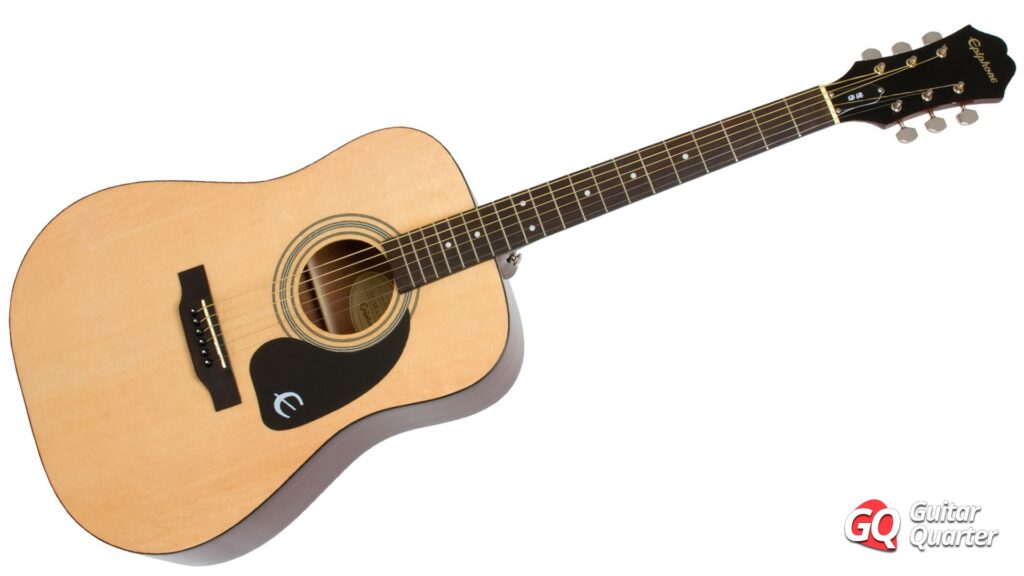
In addition, over the years and its use, the solid wood matures and develops. So over time, if you take good care of your musical instrument and also play it regularly, a solid wood acoustic guitar – and any other – will sound better and better: more open, fuller and richer. The tonewoods live!
Finally, there is another advantage, which we hope you do not take advantage of, and that is that solid wood can usually be repaired in case of cracks or breaks, which is not so easy with laminate wood.
Disadvantages of Solid Wood vs. Laminate in Acoustic Instruments
Solid wood is less stable and weaker than laminate wood. Thus, solid wood is more prone to cracking, warping and even breaking. Also, high-quality solid woods may be too expensive for most players.
So if you are looking for an “all-terrain” guitar, which you will expose to the sun, temperature changes, beer splashes, possible falls, among other things. A solid wood guitar will not be the one for you. The same will happen if you are looking to keep a limited budget when buying an acoustic guitar, it is most likely that you should at least opt for laminate wood on the back and sides of the body.
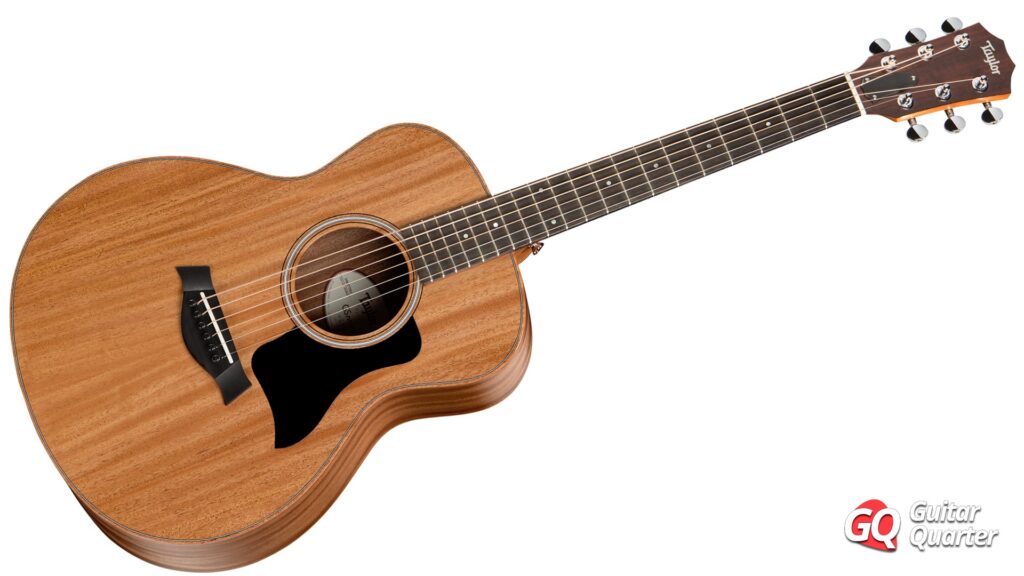
Also, we recommend that you visit our tutorial on guitar string names: notes, numbers and order.
Do laminate wood guitars have bad tone?
Not at all. Certainly a laminate wood guitar will not have the richness, depth, and complexity of sound of a premium solid wood acoustic guitar. But that doesn’t mean that a guitar with laminate wood has bad tone.
Thus, as there are different qualities of solid wood, depending on its mechanical or sound qualities, or its curing process, the same thing happens with laminate wood. There are different qualities of laminate wood. Thus, it may even happen that a premium laminate wood, such as those used by manufacturers such as Taylor and Martin, sounds better than the solid wood used by generic or low-end brands.
Thus, a guitar built from laminate wood may have a great sound, but technically it won’t be as good for the discerning listener. In addition, you will be able to get affordable instruments with a great price-quality ratio, made of laminated wood.
Pros and Cons of using laminate wood in acoustic guitars
Advantages of laminate wood compared to solid wood in musical instruments
The first big advantage is lower costs. Both the cost of laminate wood and the cost of labor are lower, since it is easier to work with.
Also, laminate woods are more stable so laminated guitars react better to extreme weather changes, and are less prone to parts peeling off.
Finally, laminate wood allows you to use attractive wood without this meaning a large increase in price.
Also, you might be interested in our tutorial on the CAGED system for guitar to play chords along the entire neck.
Disadvantages of Laminate vs. Solid Wood in Acoustic Instruments
Laminate wood uses cheaper wood for its manufacture, and is also more rigid. These two points affect the sound of the acoustic guitar, both for its tonal richness and its volume. In addition, its tone does not evolve over time as it does with solid woods.
Another point against laminate wood is that although it is more resistant, if it breaks, it is more difficult to repair.
An ugly truth about laminate guitars
As we have already seen, the way to reduce costs with laminate wood is to use only one attractive layer of wood for the outer layer. But also, lower tonal quality wood is often used, which means that a laminate wood that shows a layer of mahogany, rosewood, koa or other exotic wood on its exterior, can mainly be made of cheaper woods with less tonal character such as poplar.
For this reason, our advice is that beyond the specifications of each guitar, consider the trajectory and quality of the manufacturer. Also, trust your ear and try out different guitars, so you’re not fooled by the fancy wood veneer exterior. In the example below, you can see that the inner ply of poplar on the Taylor Academy 12 is much thicker than the outer plies of sapelli, an African substitute for mahogany.
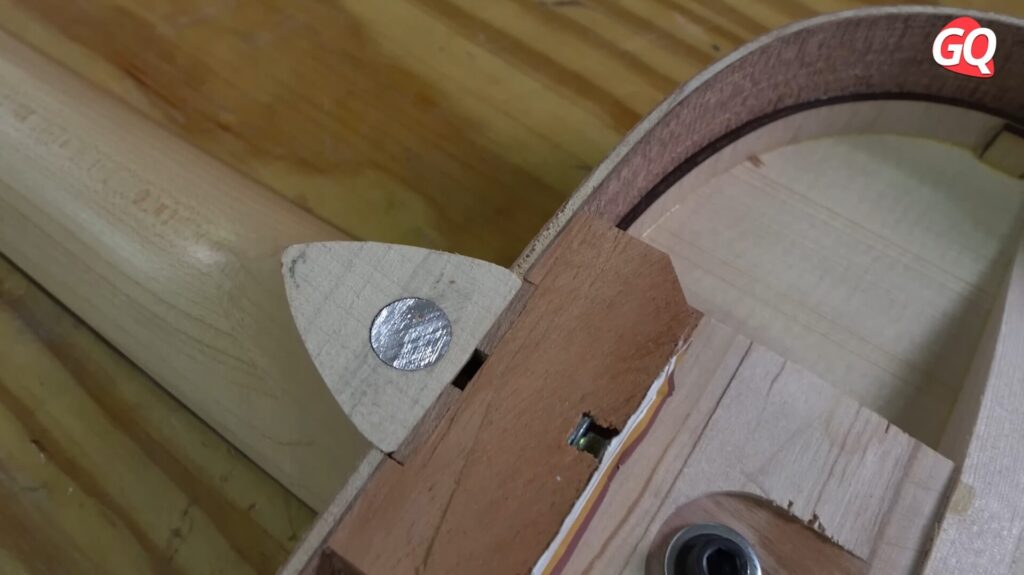
Thus, we recommend that you buy a laminate guitar from a well-known brand such as Martin, Taylor, Gibson, Fender, and even Epiphone and Ibanez, rather than a “solid top” guitar from a generic brand or one that is dedicated to very priced instruments.
Take a look at our tutorial on musical intervals: What they are, tables and types to understand music theory.
Solid wood parts on acoustic guitars
Normally, solid wood guitars are made of two paired pieces, which are joined in the center, this is called bookmatched. This is because a very wide -and expensive- wood would be needed to cover the entire body of the guitar. In turn, using two pieces of wood using bookmatched, allows the grains of the two pieces of wood to face each other and compensate for torsion tendencies giving the instrument more stability. So, don’t confuse bookmatched wood construction with laminate (not solid) construction!
The technique of bookmatched combined guitar wood
Bookmatched guitar wood refers to finding matching pieces of similar wood, usually two pieces of the same wood facing each other. That is, these pieces of wood are taken from the same log, cut into sections, and then the thin pieces will resemble each other in grain, since they came from the same log.
This technique is widely used for the top of the soundboard and the back of the guitar. But not for the sides of the acoustic guitar. Bookmatched woods are also used on electric guitars when using fancy woods like flamed maple or other figured-grain woods, and of course translucent finishes, like on Gibson Les Paul or Paul Reed Smith Custom guitars.
The bookmatched can also be used with decorative sheets, that is, very thin sheets that are placed only for aesthetic purposes. Thus bookmatched is also used on cheap and expensive guitars. In expensive guitars, figured solid wood is used, and in cheap ones, thin sheet or veneer. When used on solid wood, it is not only because the mirror effect is very attractive, but also because costs and resources are saved and stability is gained. Therefore, do not think that if you see a guitar with a single piece of wood it is better. In fact, that piece of wood is likely actually a laminate wood.
Also, you might be interested in this article about the history of the classical, acoustic and electric guitar.
Be careful with humidity and your solid wood acoustic guitar!
If you own or want to buy a multi-thousand dollar all-solid guitar, you have to consider humidity. In general, solid wood acoustic guitars are much more sensitive to environmental factors than guitars with laminate wood or electric guitars. That is why we recommend buying a hygrometer or thermohygrometer to measure humidity. Ideally, the ambient humidity should be around 50%. Thus, an environment with humidity between 45% and 55% is most preferable, although between 40% and 60% is also acceptable. In case the humidity exceeds 60%, the instrument should be exposed to drier air, if possible. Instead, if it falls below 40%, consider using a humidifier.
The importance of a good case for your acoustic guitar
It is important that if you have an expensive guitar with a solid top or all-solid wood that you have a good guitar case. If you don’t plan on playing your guitar for a while or are going to take it outdoors, it’s a good idea to put a humidifier in the case.

Conclusion on the comparison of the construction with solid and laminate wood in acoustic guitars
In conclusion, solid wood gives the guitar a richer, more complex and deeper sound with more overtones and volume. Laminate wood makes it possible to build more stable, resistant and cheap instruments. Also, remember that there are different qualities of both solid and laminate wood. Thus, a laminated Martin or Taylor guitar may sound better and louder than a cheap solid wood guitar.
In conclusion, although at a general level, we can say that a solid body guitar is better, it must be analyzed on a case-by-case basis, depending on construction qualities and also your needs as a musician.
Check out the tutorial on the best popular easy guitar Riffs for beginners with Tabs.
Choosing Between a Solid or Laminate Wood Guitar, Overview
If your priority is tone, you won’t expose your guitar to aggressive factors to wood, and you don’t have a budget limit, without a doubt, the solid wood acoustic guitar is your option.
On the contrary, if you are looking for a cheap instrument to be able to use outdoors, play on campfires, take on a trip, expose it to the sun, among other adverse situations for wood, a laminated wood guitar will be the most appropriate option.
Also, if the guitar will be used mainly plugged in and amplified, the differences between solid wood and laminate will be lost. Therefore, a laminate wood electro-acoustic guitar will be a smart option if you want to keep a tight budget. If you don’t have a budget limit, a solid wood guitar will be the best option.

Finally, if you are looking for an acoustic instrument with a good value for money, in which you do not have to spend a fortune, but that sounds good, an acoustic guitar with a solid wood top and laminated back and sides will be the best alternative for you.
Try as many acoustic guitars as you can
But always remember, the most important thing is that the final decision is made by your ears. Try as many guitars as possible. Your ear may not yet be able to feel the differences between the different types of guitar construction. So maybe you don’t need a solid wood guitar. Keep in mind that the differences, unless you’re comparing a low-end instrument against a thousand-dollar instrument, can be subtle. So if you don’t hear big differences, since there are no big differences in appearance between a solid wood guitar and a laminate guitar, watch your wallet and go for a guitar made of laminated wood.
Also, we recommend that you use one of the best free online virtual drum machines to practice with your guitar.





